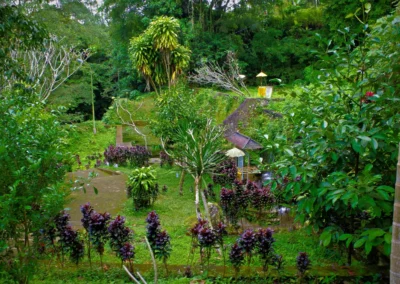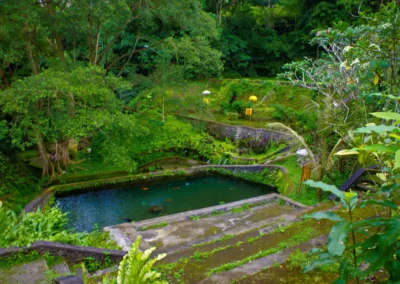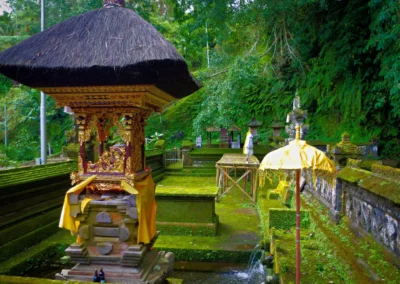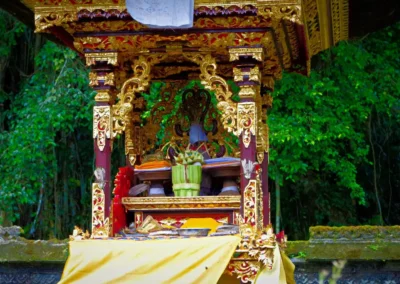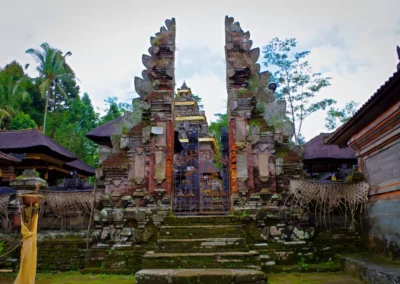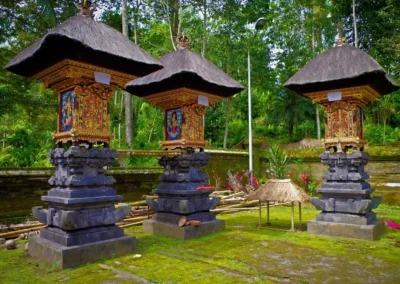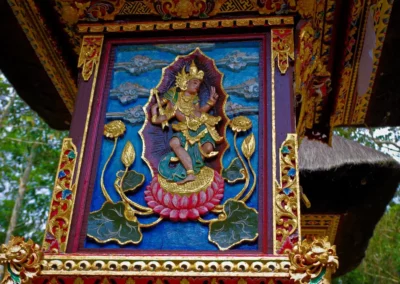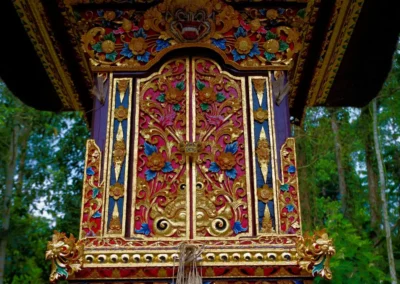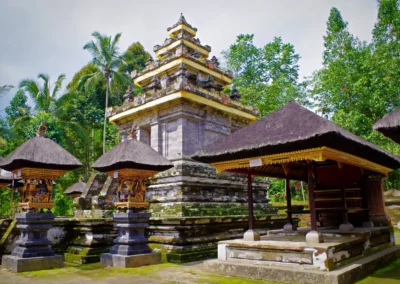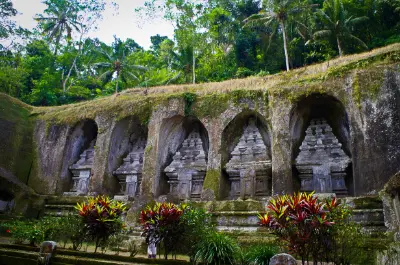Mengening Temple

Welcome to the Temple of Mengening
🛕 Pura Mengening: The Hidden Sanctuary of Sacred Water
📍 Location
- Located in Tampaksiring, in the regency of Gianyar, in central Bali.
- A few kilometers from the famous temple of Tirta Empul, but much less frequented.
🌿 Atmosphere and environment
- Nestled in lush vegetation, surrounded by giant bamboos, of palm trees and of natural sources, the temple exudes an atmosphere of deep calm.
- Far from the tourist crowds, it is a place intimate, almost secret, where one feels a direct connection with nature and the sacred.
💧 The Melukat Purification Ritual
- The temple is dedicated to the spiritual purification by water, called Melukat.
- Visitors can participate in this ritual by bathing in the sacred pools, under the jets of water coming from sculpted fountains.
- Each throw represents an intention: purification of the body, mind, emotions or negative energies.
🧘♂️ Spirituality and Symbolism
- The name Mengening comes from the Balinese word meaning “silence” or “deep meditation”.
- The temple is often used by the Balinese for healing, blessing or meditation ceremonies.
- It is considered a place of spiritual withdrawal, where we can reconnect with ourselves.
🏛️ Architecture
- The temple is built of black volcanic stone, with ancient carvings depicting Hindu deities and water symbols.
- It has several sanctuaries, the flowery altars, and the natural pools fed by a spring that never dries up, even in the dry season.
🚗 Access and visit
- At about 30–40 minutes drive from Ubud, accessible by car or scooter.
- Few signs indicate the site, which reinforces its hidden character.
- It is recommended to come with a Balinese guide, who can explain the rituals and assist in the purification.
✨ Why visit Mengening ?
This is a place for those who seek authenticity, inner peace, and a deep spiritual experience. Unlike busy temples, here silence reigns, and every drop of water seems to carry a sacred intention.
Continue to the Royal Tombs of Gunung Kawi
These royal tombs, dating back to the 11th century, consist of ten sanctuaries carved directly into the stone.

